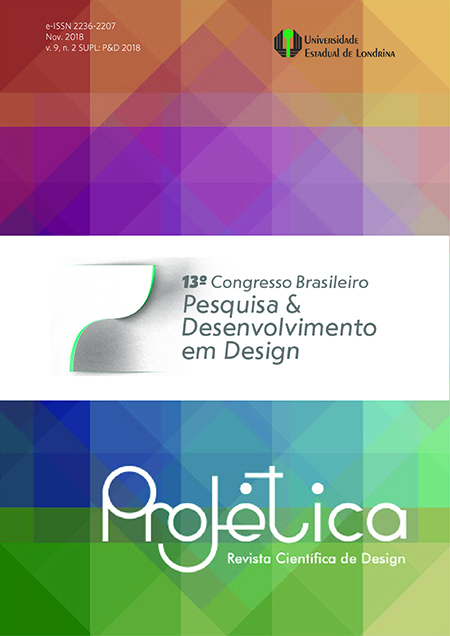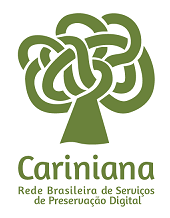What do you mean that wasn’t on the design brief? New perspectives about the brief in the design process through Actor-Network Theory lenses
DOI:
https://doi.org/10.5433/2236-2207.2018v9n2Suplp89Keywords:
Design brief, Design process, Actor-Network TheoryAbstract
Regarding the design brief, there is a mismatch between what design studies posit about it and how the design process is, in fact, conducted. While the design brief is commonly understood as a tool to uncover problems and guide the development, design studies often describe a diffuse and non-linear design process that dynamically adapts to the work context – whether the objective is to design products/services or innovation-driven organizational strategies. From a documentary analysis of 58 design briefs sent by 6 informants, this research aims to broaden the understanding about the dynamics and procedures of the brief in the design process. Principles and concepts of the Actor-Network Theory informs on the plasticity with which the design brief is materialized. Even though it intends to simplify the development, the design brief evokes new perspectives for the design process, because it projects an otherwise restrictive approach onto the field of possibilities.Downloads
References
BINDER, Thomas et al. Democratic design experiments: between parliament and laboratory. CoDesign, London, v. 11, n. 3-4, p. 152-165, 2015.
BJÖRGVINSSON, Erling; EHN, Pelle; HILLGREN, Per-Anders. Participatory design and “democratizing innovation”. In: PARTICIPATORY DESIGN CONFERENCE, 11., 2010, Sydney. Anais… Ney York: ACM, 2010. p. 41-50.
BROWN, Tim. Change by design: how design thinking transforms organization and inspires innovation. New York: HarperCollins, 2009.
BUCHANAN, Richard. Wicked problems in design thinking. Design issues, Illinois, v. 8, n. 2, p. 5-21, 1992.
BUCHANAN, Richard. Worlds in the making: design, management, and the reform of organizational culture. She Ji: The Journal of Design, Economics, and Innovation, Shangai, v. 1, n. 1, p. 5-21, 2015.
CALLON, Michel. Some elements of a sociology of translation: domestication of the scallops and the fishermen. The Sociological Review, Oxford, v. 32, p. 196-233, May 1984.
FINDELI, Alain. Rethinking design education for the 21st century: theoretical, methodological, and ethical discussion. Design Issues, Cambridge, v. 17, n. 1, p. 5-17, 2001.
KRIPPENDORFF, Klaus. Content analysis: an introduction to its methodology. Thousand Oaks: Sage, 2012.
LATOUR, Bruno. On actor-network theory: a few clarifications. Soziale Welt, Baden-Baden, v. 47, p. 369-381, 1996.
LATOUR, Bruno. On recalling ANT. The Sociological Review, Oxford, v. 47, n. 1, p. 15-25, 1999.
LATOUR, Bruno. Reassembling the social: an introduction to actor-networktheory. Oxford: Oxford University Press, 2005.
LATOUR, Bruno. Science in action: how to follow scientists and engineers through society. Cambridge: Harvard University Press, 1987.
LATOUR, Bruno. What is the style of matters of concern: two lectures in empirical philosophy. Amsterdam: Van Gorcum, 2008.
LAW, John. After ANT: complexity, naming and topology. The Sociological Review, Oxford, v. 47, n. 1, p. 1-14, 1999.
LAW, John. Notes on the theory of the actor-network: ordering, strategy, and heterogeneity. Systems Practice, New York, v. 5, n. 4, p. 379-393, 1992.
BRIEFING. In: Merriam-Webster. Disponível em: https://www.merriam-webster.com/dictionary/briefing. Acesso em: 24 jul. 2016a.
BRIEFING. In: Oxford dictionaries. Disponível em: https:// en.oxforddictionaries.com/definition/briefing. Acesso em: 24 jul. 2016b.
RITTEL, Horst Willhelm Jakob; WEBBER, Melvin Myron. Dilemmas in a general theory of planning. Policy Sciences, Amsterdam, v. 4, n. 2, p. 155-169, 1973.
SÁ-SILVA, Jackson Ronie; ALMEIDA, Cristóvão Domingos de; GUINDANI, Joel Felipe. Pesquisa documental: pistas teóricas e metodológicas. Revista Brasileira de História & Ciências Sociais, Santa Vitória do Palmar, v. 1, n. 1, p. 1-15, 2009. Disponível em: https://www.rbhcs.com/rbhcs/article/view/6/. Acesso em: 30 jul. 2016.
SAYES, Edwin. Actor-network theory and methodology: just what does it mean to say that nonhumans have agency? Social Studies of Science, London, v. 44, n. 1, p. 134-149, 2014.
STORNI, Cristiano et al. Designing things together: intersections of co-design and actor-network theory. CoDesign, London, v. 11, n. 3-4, p. 149-151, 2015.
ZURLO, Francesco. Design strategico. Treccani. 2010. Disponível em: http://www.treccani.it/enciclopedia/design-strategico_%28XXI-Secolo%29/. Acesso em: 30 abr. 2014.
Downloads
Published
How to Cite
Issue
Section
License
Projética está licenciada sob a Creative Commons Attribution CC-BY 4.0 International. Os autores detém os direitos autorais e concedem à revista o direito de exclusividade de primeira publicação.
Os autores dos trabalhos aprovados autorizam Projética a, após a publicação, ceder seu conteúdo para reprodução em indexadores de conteúdo, bibliotecas virtuais e similares.
Os autores assumem que os textos submetidos à publicação são de sua criação original, responsabilizando-se inteiramente por seu conteúdo em caso de eventual impugnação por parte de terceiros. As opiniões emitidas pelos autores dos artigos são de sua exclusiva responsabilidade.
A revista se reserva o direito de efetuar, nos originais, alterações de ordem normativa, ortográfica e gramatical, com vistas a manter o padrão culto da língua e a credibilidade do veículo. Respeitará, no entanto, o estilo de escrever dos autores. Alterações, correções ou sugestões de ordem conceitual serão encaminhadas aos autores, quando necessário. Nesses casos, os artigos, depois de adequados, deverão ser submetidos a nova apreciação. As provas finais não serão encaminhadas aos autores.











